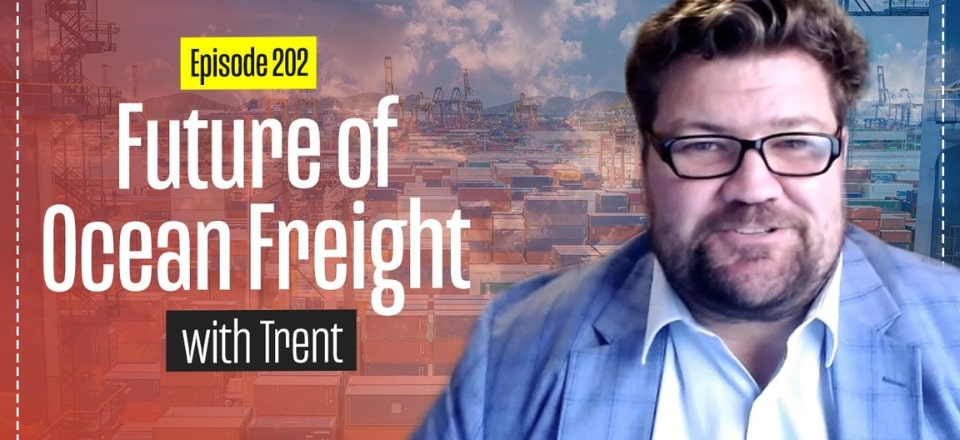Have you considered the future possibilities for ocean freight and global logistics?
In this rapidly evolving field, being informed about trends is a must for those on the front lines.
Embark on a journey of transformation with Trent Morris, and see what the future holds!
Watch the full video below!
Here’s a glimpse of what we talked about. Make sure to watch the full video to get the detailed insight of this topic.
Rob: So, Trent, tell us about the future of international logistics and maritime shipping. You seem to know a lot about it – what’s your source? Where have you been?
Trent: Absolutely, Rob! I’ll just consult my crystal ball for predictions. But in truth, I was recently at the TransPacific Maritime conference in Long Beach, CA. It’s a fantastic forum for networking and staying updated. Top industry players gather there, including CEOs of major shipping lines, top intelligence agencies, and significant governmental bodies, especially from the U.S. It’s insightful, helping us understand current industry directions and, more importantly, timelines.
Rob: Excellent! We recently made a video on the current state of ocean freight, which people can watch. But what’s the industry’s future? Are new technologies shaping things?
The Carbon Neutrality Mandate
Trent: Absolutely! Technology, especially in infrastructure, is driving everything – ships, ports, you name it. The major focus we heard repeatedly was achieving carbon neutrality by 2050, as mandated by the International Maritime Organization (IMO). Some companies are pushing for 2030 as a midway goal. This shift is mostly in fuel: current fuel, called “bunker,” is a high-density pollutant. Alternatives like ammonia derivatives, synthetic LNG, hydrogen, and even nuclear are being considered.
Rob: Nuclear – interesting. With Australia buying nuclear submarines, would nuclear-powered container ships make sense? Expensive, perhaps?
Trent: Yes, it’s a cost-effective option for some vessels. These shipping giants are far larger than most naval ships, so nuclear could be a feasible zero-carbon solution, despite its own waste challenges.
A notable shift is in port infrastructure to improve unloading efficiency. AGVs are being introduced, aiming to move containers around ports autonomously. But with massive vessels, complete automation is challenging due to ship balance.
Investments and Financial Resources
With full bank accounts after years of growth, shipping lines are financially prepared for sustainable investments. For example, Maersk has started adopting ammonia fuel, while ONE Group explores synthetic LNG. Additionally, IMO pressures companies to retire older vessels, especially pre-2009 models, contributing to environmental improvements.
Rob: So, lots of new regulations and tech changes to keep an eye on.
Trent: Exactly, Rob. With the push from governments and consumers, expect big changes in everything from ports to freight rates over the next decade.
Related articles on this topic have appeared throughout our website, check them out:
- The Challenge of Freight Container Utilisation and Why it Matters
- Container Freight Costs and Forecasting: Intrinsically Linked & Frustratingly Challenging
- Do You Know When it’s Time for a Freight Review?
Editor’s Note: The content of this post was originally published on Logistics Bureau’s website dated May 31, 2023, under the title “Ocean Freight Future Trends with Trent Morris“.

